Inside the OnePlus camera lab: How OnePlus improves its phones' cameras year after year

OnePlus has come a long way in the last five years. The company had humble beginnings — selling its phones in limited quantities via an invite-only system — but over the years it has transformed into the brand to beat in the value flagship category. This year the Chinese manufacturer is going after the likes of Google and Samsung with the OnePlus 7 Pro, its most ambitious device yet.
One of the marquee features in the OnePlus 7 Pro is the 48MP primary camera at the back that's joined by a wide-angle lens and 3x zoom shooter. There was a lot of excitement around the phone's camera prowess ahead of launch, but the device didn't live up to expectations in our testing. The issue was further exacerbated by the fact that the OnePlus 7 Pro's DxOMark score of 111 edged the phone ahead of the Galaxy S10+ and other devices with better cameras.
OnePlus has had to roll out several updates to the device in the intervening weeks, with OxygenOS 9.5.7 delivering noticeable improvements to the overall image quality. The team that rolled out the fixes is based in Taiwan, and are part of a new dedicated camera lab that's set up in OnePlus's offices in Taipei.
OnePlus flew me out to Taiwan to check out the lab and talk to the team here to get a sense of what it is trying to achieve. With hardware increasingly commoditized, brands are looking to the camera to set their phones apart. For Huawei, it's the zoom lens on the P30 Pro. For Google, it's a camera that works unerringly in any situation. OnePlus is now looking to channel some of that same ethos with its camera lab in the hope that it will allow the company to compete better with more established players.
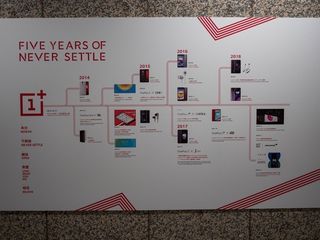
The tour of the lab starts off with a poster that charts OnePlus's journey, including all the milestones over the last five years.
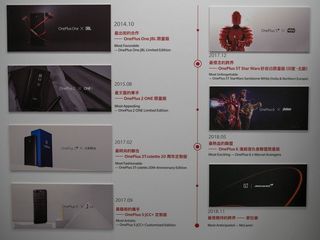
There's also a poster inside the office that lists all of OnePlus's collaborations to date, such as the OnePlus 5T Star Wars edition, the OnePlus 6 Avengers edition, and the more recent OnePlus 6T McLaren edition.
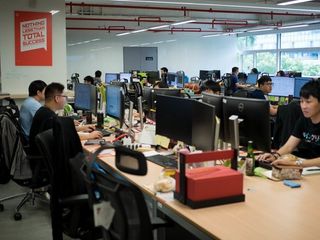
The OnePlus office in Taiwan houses under a hundred employees, and the space is littered with motivational posters, photos taken with OnePlus phones, and the usual accouterments: a break room with foosball tables, a snack room, and the like.
Be an expert in 5 minutes
Get the latest news from Android Central, your trusted companion in the world of Android

Coming to the camera lab itself, there's a lot of equipment that OnePlus relies on for testing white balance, exposure, contrast, and clarity. One automated test runs through different exposure settings and in various lighting scenarios to calibrate the sensor.
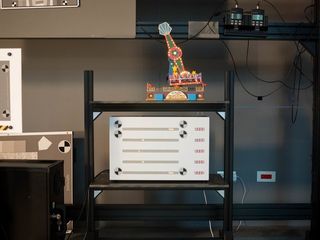
There's also a test for object detection and focus, with OnePlus using a moving object to see if the camera can stay locked in.
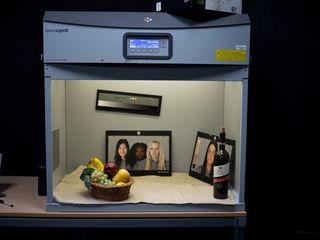
OnePlus uses several light booths — like the SpectraLite QC model from X-Rite — for accessing color accuracy in various lighting conditions. That particular model above uses seven different light sources to accurately simulate an entire gamut of lighting scenarios.

The lab also includes a robotic arm combined with a lighting system that can simulate over a thousand illumination levels at various color temperatures. The robotic arm is able to shift between all three focal lengths, and the test cycles through several illumination levels and charts to dial in the color accuracy of the camera. Data from these tests are sent over to analysis to find any aberrations at a particular lighting condition or focal length, and by using a robotic arm OnePlus is basically removing any user error from the equation.
OnePlus uses three mannequin heads that are made out of a gel meant to mimic the texture of the human skin. The varying skin tones on the mannequins allows the company to calibrate its cameras better for a wider range of tones. There wasn't a male mannequin included in the mix to provide a baseline for facial hair, so I did my part:
@chunkynerd getting in on the action as well. pic.twitter.com/LOcHQM6CwA@chunkynerd getting in on the action as well. pic.twitter.com/LOcHQM6CwA— Akshay Bhalla (@Bhallanator) July 9, 2019July 9, 2019
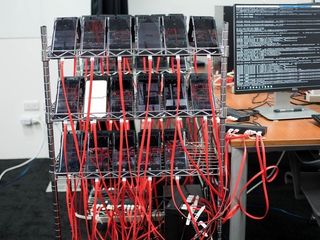
OnePlus also has a testbed of devices that cycle through all the shooting modes on the camera, with the system used as a sort of endurance test to make sure the camera holds up to continual use. The aim with all of these automated tests is to calibrate the sensor so that the final image is natural and balanced. Of course, this wasn't the case on the OnePlus 7 Pro at launch, but the company has managed to tweak a lot of parameters with subsequent updates.
OnePlus had a smaller image lab in its main office in Shenzhen, but the company decided to invest in a dedicated unit with better equipment and both hardware and software teams working out of a single location. That's how the Taiwan camera lab came to be, with the unit finalized just before the launch of the OnePlus 7 Pro.
OnePlus's camera team is made up of HTC veterans that have been in the industry for over a decade.
Now, Taiwan is an unusual location to set up a camera lab as OnePlus doesn't really have a strong presence here, but the company revealed that most of the engineers in the camera team are HTC veterans. Simon Liu — the head of imaging at OnePlus — was hired from HTC, and most of his team leads also made the switch from the Taiwanese manufacturer.
OnePlus said Liu's team had been working together for the better part of a decade at HTC before making the move, so while the lab itself is new and the entire team in Taiwan is just over 30 people, they have a lot of pedigree in this area. And although OnePlus is a major phone manufacturer now, the company continues to operate like a startup: its global headcount is less than what Samsung employs in its software update unit.
I talked to Zake Zhang, a product manager in OnePlus's camera lab, to better understand the company's goals with the camera lab. Zhang said that OnePlus has its own white paper that details its philosophy around image quality, how it chooses hardware sensors for a particular phone, and what direction it is heading on the software algorithm side of things. The imaging lab is designed to better facilitate objective testing — like the robotic arm system simulating over 1,000 lighting conditions — thereby leaving more time for subjective real-world testing.
OnePlus ultimately wants to challenge Google, Huawei, and Samsung in this category.
Furthermore, OnePlus compares its phones against the latest flagships in the market to get a better sense of where it can make improvements. OnePlus has several subjective test labs around the world, including China, India, and Germany as well. The company has a reference point for each scene, with the goal of creating a balanced photo that doesn't oversaturate colors too much. Essentially, OnePlus wants its camera to get to a point where you'll be confident taking photos in any lighting condition.
A lot of that comes down to choosing the right hardware. Until this April, that decision involved two different units — the sensors were in charge of the product team, and the software tuning was done by the image team. Both teams put forth their requirements and figure out the sensors that make the most amount of sense. From May onwards, both the hardware and software teams were brought together to create a camera team that makes such decisions more streamlined in the future.
As for the 48MP camera module, OnePlus says it finalized on the IMX 586 for the detail on offer and the fact that the sensor can be leveraged to produce 12MP shots, creating the ideal balance for most lighting conditions. Zhang also talked about how OnePlus is handling HDR, saying that the current implementation is centered around merging multiple frames together.
Going forward, computational photography is going to play a larger part, and OnePlus says it is exploring that option in its quest to produce a natural and balanced photo. Another area of focus is customizing the image calibration for various regions, and while OnePlus says its resources are too limited to do so right now, that is set to change in the coming years.
OnePlus also relies heavily on feedback from its community, as it was pointed out numerous times during my visit to the camera lab. Most of the fixes that were included in the 9.5.7 update were based on suggestions and feedback OnePlus received from its (often vocal) community. To that effect, the company rolled out another update (9.5.8) earlier in the week that introduced further tweaks to the camera as well as the usual bug fixes.
The brand is also incorporating user feedback to drive new features, stating that it will roll out portrait mode for the wide-angle lens later this year. You'll also be able to take video using the wide-angle lens with the upcoming update.
So what does all of this mean for users? The OnePlus 7 Pro is already much better at taking photos than it was at launch, and the company says it will roll out additional improvements and new features over the course of the year. The long-term goal for OnePlus is to be able to challenge Google, Huawei, and Samsung in this category, and the camera lab is just the first step in achieving that target.

Harish Jonnalagadda is a Senior Editor overseeing Asia at Android Central. He leads the site's coverage of Chinese phone brands, contributing to reviews, features, and buying guides. He also writes about storage servers, audio products, and the semiconductor industry. Contact him on Twitter at @chunkynerd.
